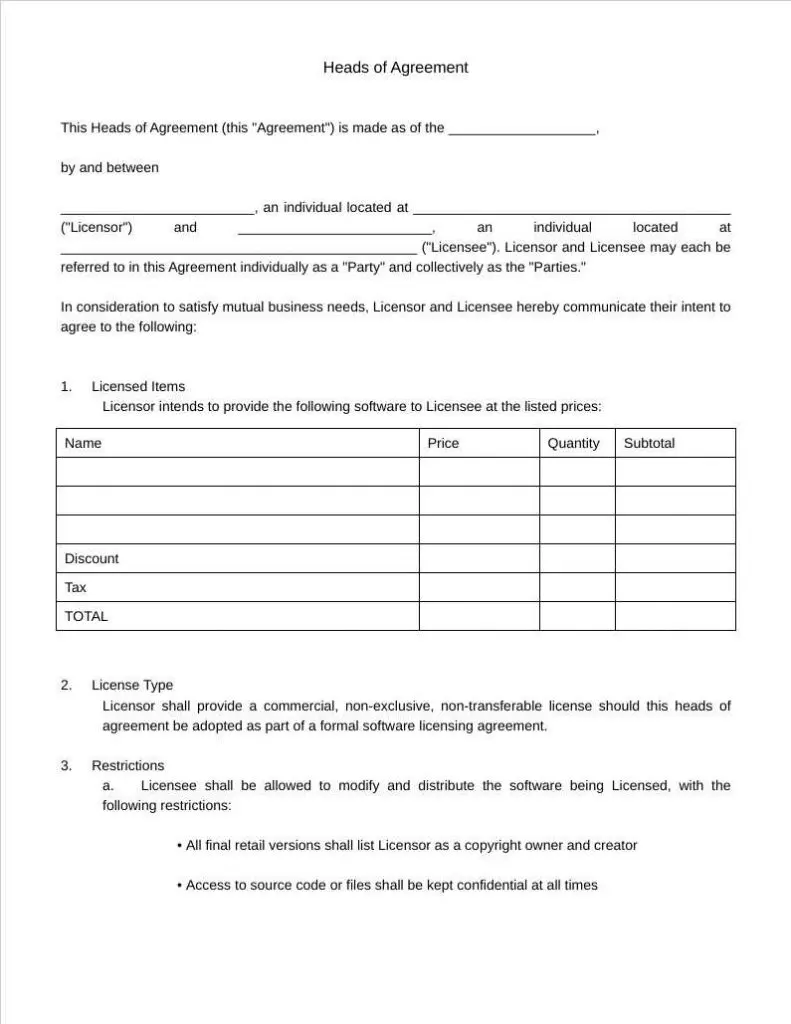
When correctly drafted, a heads of agreement is an initial, non-binding document that consists of a list of clauses or terms and conditions that are currently agreed upon between parties in a proposed agreement. Generally used for negotiating business transactions, such as buying a business or licensing, it is intended that a party signs the agreement at pre-contracted stages during the ongoing negotiations and eventually enter into a binding agreement.

When negotiating a heads of agreement document, it is important to remember that these documents do not contain legally binding terms and can only be used as a starting point for further negotiations. One common way to ensure that the subsequent formal agreement is upheld is to include particulars and record proposed terms during business discussions. Additionally, it may be helpful to have a professional provide legal advice or review the document before proceeding with a final agreement to confirm accuracy and enforceability. Heads of agreement can help make a future agreement legally binding with another entity. It functions as an agreement of understanding helpful for preserving records and possible provisions of a formal commercial agreement. If a proposed agreement contains what both parties agree on, you can ensure that executing a legally binding contract will go smoothly, minimizing possible conflict and a lengthy legal process. Usually, head agreements are designed only to provide a basic agreement for transactions or partnerships. This takes place during the negotiation or a pre-contractural phase. By design, the heads of agreement cannot cover the entire details required of a formal, legally binding agreement. But its lack of detailed information is its strength; there is little likelihood that both sides disagree. If the two parties come to a shared understanding and have agreed to a heads of agreement, the next stage involves the involvement of attorneys and accountants.
Depending on the nature of the transaction being negotiated and the scope of the agreement, you may also want to include other provisions related to intellectual property rights, insurance requirements, reputation management obligations, governing law or jurisdiction clauses, etc.
Heads of agreement templates are usually applicable across Commonwealth countries. In Canada, the equivalent of heads is a letter of intent. In the United Kingdom, for instance, it is typical for transactions in the real estate industry, including the sale of land and the purchase of homes.